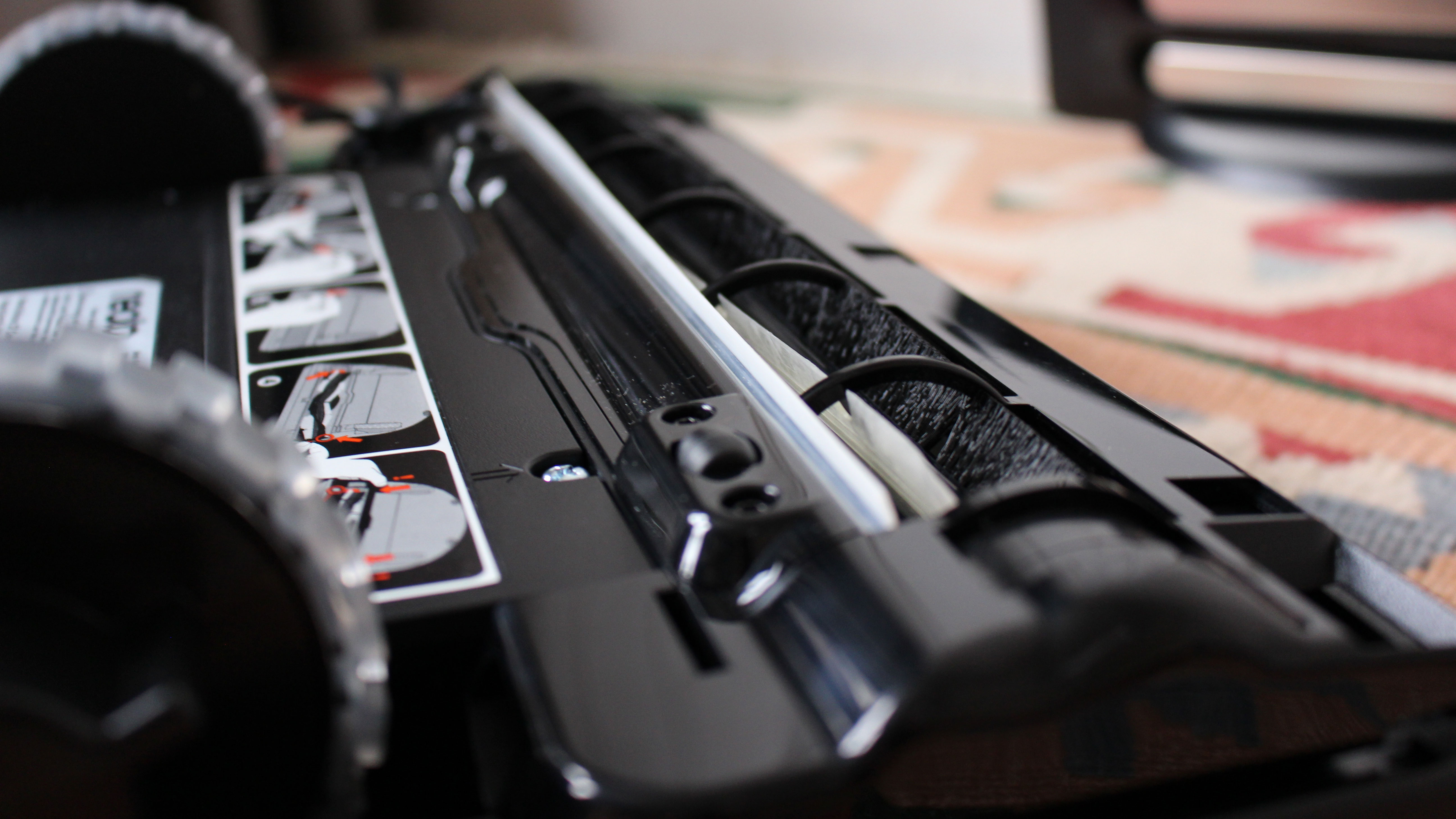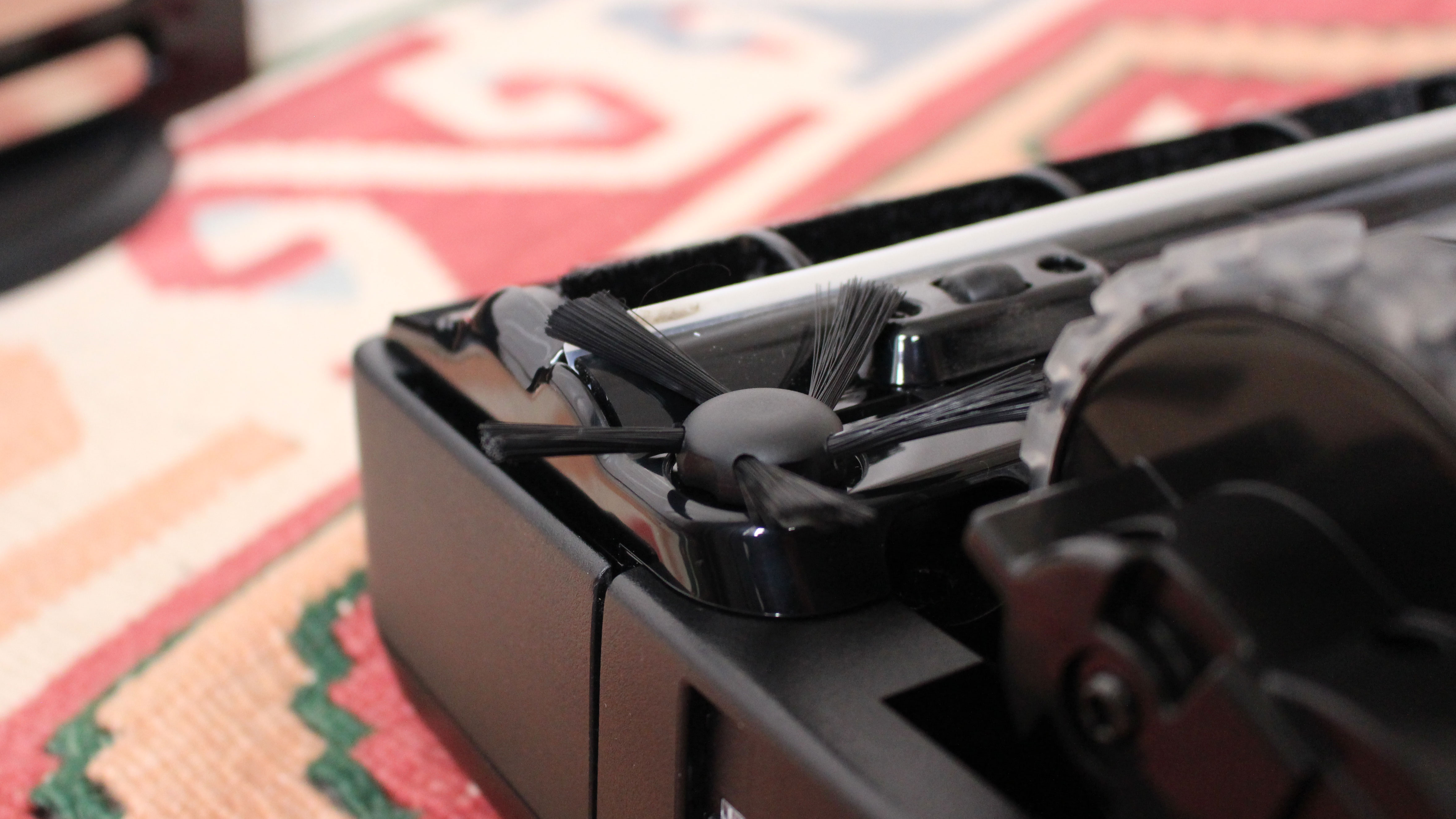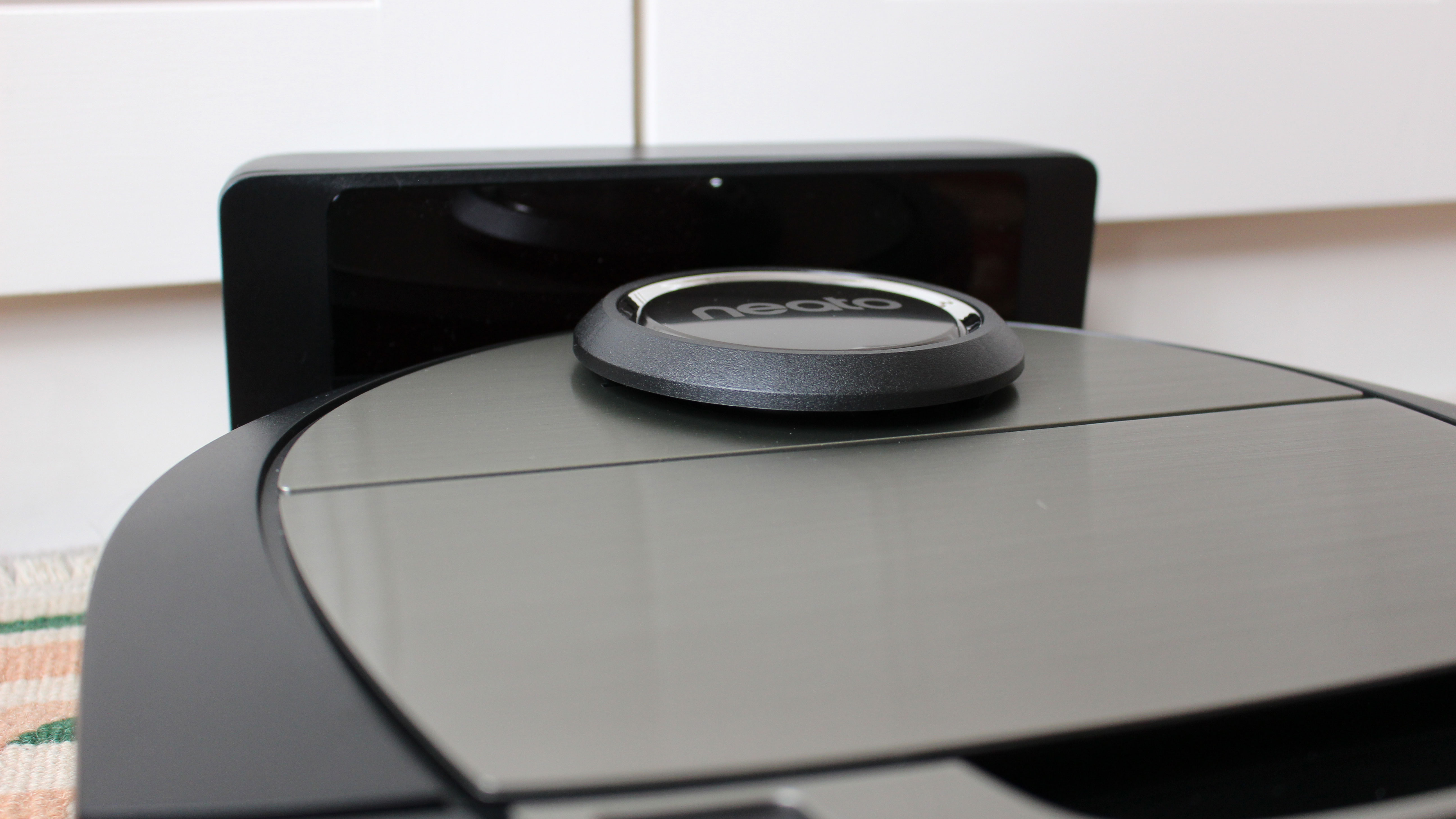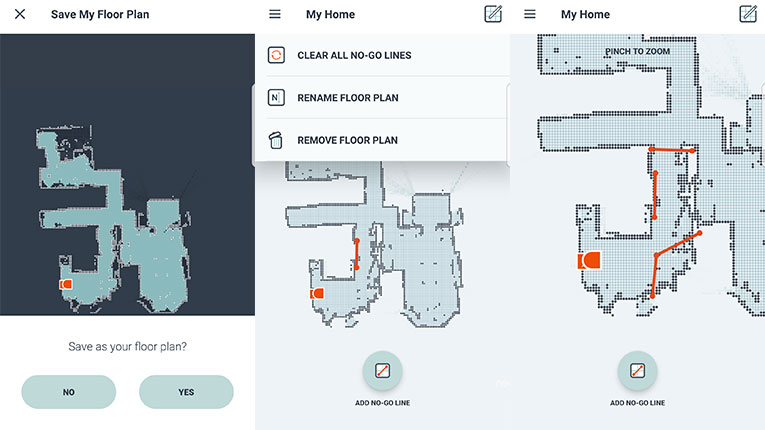TechRadar Verdict
Neato has somehow managed to make a huge leap forward from the Botvac Connected, which was already a brilliant robot vacuum cleaner. With the introduction of ‘My FloorPlan’ and ‘no-go Lines’ Neato is offering users an unprecedented level of control over their robot vacuum cleaner. Not just that, but the design is a significant step up too. The only possibly sticking points are the price and a small bin size – a complaint we have with most robo-vacs.
Pros
- +
No-go Lines feature is a revelation
- +
Stylish design
- +
Great performance
Cons
- -
Expensive
- -
No ‘full’ indicator for bin
- -
Design flaw carried over from other models
Why you can trust TechRadar
A few years ago robot vacuum cleaner seemed like a gimmicky novelty. But fast-forward to the present day and for those with the space and the cash, they're now considered a fairly viable home cleaning solution - and a larger smart home staple.
Although there are plenty of options these days, iRobot’s Roomba is still the most recognizable name in the field. But that doesn't mean you shouldn't spend some time checking out the competition. In our opinion, the Neato Botvac D7 Connected should have Roomba worried. Very worried.
The Botvac D7 has taken everything we loved about the brand's previous model, the Botvac Connected, and improved upon it. Well, almost everything, but we’ll get to that later.
The Botvac Connected was marketed on the fact that it ‘intelligently’ mapped out rooms and guided itself around clearing up your mess using sensors, rather than just whizzing around until it was clean.
With the D7, the brand has taken this smart cleaning a step further by giving you access to the maps it creates, and allowing you to draw ‘no-go lines’ that your D7 won’t cross while it vacuums.

This may not seem like a big deal, but it's really handy. It's a feature that ensures the robo-vac will avoid spaces such as children’s play areas, and your pet’s favorite corner, which it may be protective of.
But for us, it instantly fixed a massive problem that we have with robot vacuum cleaners generally: they try to eat cables and so often get stuck under desks and sofas chewing away on power leads.
Sign up for breaking news, reviews, opinion, top tech deals, and more.
By creating a no-go zone that surrounded our desk, it meant the D7 didn’t even go near the cables. It also meant that if we forgot to close the door of a room we didn’t want it to go into it wasn’t a problem, as we just put a line across the door on the app and the D7 ignored the room.
These upgraded smarts don’t come cheap, and the Neato Botvac D7 Connected comes in at a hefty $799 / £799. This price tag puts it in direct competition with iRobot’s Roomba 980, which is still industry-leading despite being a few years old now.
With the D7, Neato clearly has tried to make the best robotic vacuum cleaner on the market, and while it’s very impressive, the question is: is it good enough to take the Roomba’s crown?
Design
Neato has stuck with a design that looks like a capital ‘D’, a move away from the typical circular design of Roomba and Dyson robot cleaners.
This design allows for the mounting of a 10.9cm rotating brush at the front of the D7, allowing it to function much like a traditional vacuum cleaner head. The front unit has a solid plastic bumper, which allows the D7 to lightly bump into any obstacles it may not have detected, enabling it to create a more complete picture of the space.

Covering the main section of the body is a very aesthetically pleasing brushed-metal plate. This is a vast improvement on the previous models from Neato, which had an easily-marked and dust-hungry plastic plate.
The large panelled section lifts off easily to reveal the bin, which is made of see-through plastic so you can easily ascertain whether it needs emptying.
As on most robotic vacuum cleaners the bin is smaller than those on a traditional vacuum cleaner, but it’s a decent size in comparison to those on other robo-vacs. We do wish that the bin was bigger than the one on the Botvac Connected, however, and that it had a ‘bin full’ sensor, as it does end up overfilling and blocking the brush mechanism even when doing a single cycle in an already relatively clean (and not vast) apartment.
Alongside the main brush is a smaller brush that rotates at 90 degrees to the main brush, and which helps to kick up dust and dirt hiding in crevices and along skirting boards.

The spinning brush for getting dust out of corners

Neato's 'turret'
One thing we were concerned about with the D7 was the inclusion of the ‘turret’ on top. This houses the sensors that allow the vacuum to measure a room, and was also a feature of the Botvac Connected, but we found that that machine frequently misjudged its own height, resulting in the turret becoming stuck on the underside of some furniture that it had squeezed under.
While the D7 is the exact same height as its predecessor it’s able to correctly identify its height, and didn’t suffer the same fate.
There are LED indicator lights to show battery level, cleaning type, and wireless connectivity, but these are just for info at a glance; the real information is in the app, which is brilliantly designed, clearly laid-out and a pleasure to use.
Maintenance
Neato is clearly aware of the fact that the Botvac D7 Connected is going to need regular maintenance as a device that deals with dirt all day.
The main brush is easy to access, the secondary brush easily pops off, the bin cabinet is easily identified and opened, and the air filter is simple to replace – Neato has included spare air filters in the box, so you’ll have months of cleaning before you have to think about any replacements.
Because cleaning a vacuum cleaner brush with your hands is both gross and fiddly, Neato has helpfully included a maintenance comb for keeping your brush heads in tip-top condition.
The secondary brush was an initial concern for us, as it was slightly warped after only the first clean and we could foresee it quickly becoming very badly warped, but to our pleasant surprise it maintained its form for the numerous other cleaning cycles we sent it on in the weeks we had with it.
Performance and features
The Neato Botvac D7 Connected offers an ‘eco’ mode and a ‘turbo’ mode. The former is quieter, prolongs the battery life of the D7 and performs a lighter clean, while the latter performs a more thorough clean, but makes the vacuum operate at a slightly antisocial volume.
Of course, antisocial volume is nothing to be concerned about if the vacuuming is happening when you’re not at home. One of the main draws of a robot vacuum cleaner is that you don’t have to be there when the cleaning happens, and it’s a benefit that Neato exploits to its fullest potential.
With the introduction of My FloorPlan and no-go lines, Neato has taken its exemplary remote cleaning features to the next level, allowing you to see exactly where the Botvac D7 cleaned and how long it took, and setting up the aforementioned no-go zones.

What this does is instantly put you back in control, something we didn’t even realize we were missing until we experienced it.
When you’re vacuuming by hand you can decide to leave an area alone, but with other robot cleaners you had to set up temporary barriers. Manufacturers have strategies for enabling you to do this, including providing physical barriers you can place where needed, but having a map on your phone on which you can just draw a line makes it so much easier.
Another great feature is ‘Manual’ mode, which allows you to control the D7 like a remote control car, using arrows on your phone’s screen. So if you’ve just had a spillage and want to only clean that specific area, you can.

There’s also the option to do a ‘Spot clean’, with the D7 cleaning a 7ft-square area starting from wherever you put it down.
It’s important to note that should you want to use the D7’s map features, it will need to start from its charging station. Once it’s done a full clean, or if it’s getting low on battery, it’ll trundle back to the docking station and put itself back on charge.
The Neato website claims the D7 can clean a 5,000 sq ft area in a single cleaning cycle. As it’s incapable of scaling a flight of stairs, you’ll need to have 5,000 sq ft on a single floor to put this to the test; that’s around the size of a basketball court, so unless you have a particularly large home (or a basketball court) you’ll need to take Neato at its word on this.

Another key feature of any robot vacuum cleaner experience is that you’re able to set it to clean on a routine, and here the Neato app is a little disappointing. The selection menu is confusing, requiring you to select and tick numerous things before an option is locked in.
We also had an issue with the D7 failing to respond to a schedule we’d created, and in all our correspondence with the support team they wanted to confirm that we had definitely created a schedule as by their own admission the process could be confusing – if Neato’s support team are aware it’s confusing, it’s clearly something that needs to be fixed.
As it’s an app issue rather than a hardware one, we hope this will be sorted out in the near future. As it was, the problem we had was only fixed by deleting and reprogramming our cleaning schedule.
Once we’d done that, the D7 performed exactly as expected, setting off at the right time, cleaning the house, avoiding the no-go lines and giving us a status report at the end of the cleaning cycle.
We liked
There are many things that we liked about the Neato Botvac D7 Connected . It’s beautifully designed, easy to use, and most importantly it cleans very well. The stand-out feature of the D7 has to be the no-go lines.
Building on an already industry-leading intelligence for mapping and object avoidance, this feature elevates the D7 to a truly brilliant product. The ability to delineate areas that you don’t, and by proxy do, want cleaned with a simple orange line on an app is a feature we never knew we needed, but once you’ve got it you can’t understand how you managed without it.
We disliked
There are no two ways about it: the bin is small. We’re fully willing to hold our hands up as dog owners and say that the D7 has quite a task on its hands (brushes?) with our apartment, but even so, having the bin overfill during a single cleaning cycle is disappointing.
Also, while the app is very nicely designed and easy to use, the scheduling section is the least user-friendly, which is totally backwards as we imagine this is the section that will get the most use.
Oh, and there’s the price: at $799 / £799 it’s definitely not cheap.
Final verdict
The Neato Botvac is without question one of the best robot vacuum cleaners we’ve had the pleasure of reviewing. It’s well designed, it cleans well, and it has plentiful customization options, so you can get it to clean exactly how you want it to.
For the price, however, we’d expect it to be faultless (or as close to it as makes no difference), and the issues we have with the bin and app mean we can’t recommend it unconditionally. That said, if you’re happy with a slightly fiddly scheduling system, and a small bin (in comparison to a conventional vacuum cleaner) with no sensor to tell when it’s full, then the Botvac D7 may well be for you.
- Want to know what your other options are? Check out: Best vacuum cleaners: from cordless Dyson to robot Roomba

Andrew London is a writer at Velocity Partners. Prior to Velocity Partners, he was a staff writer at Future plc.
